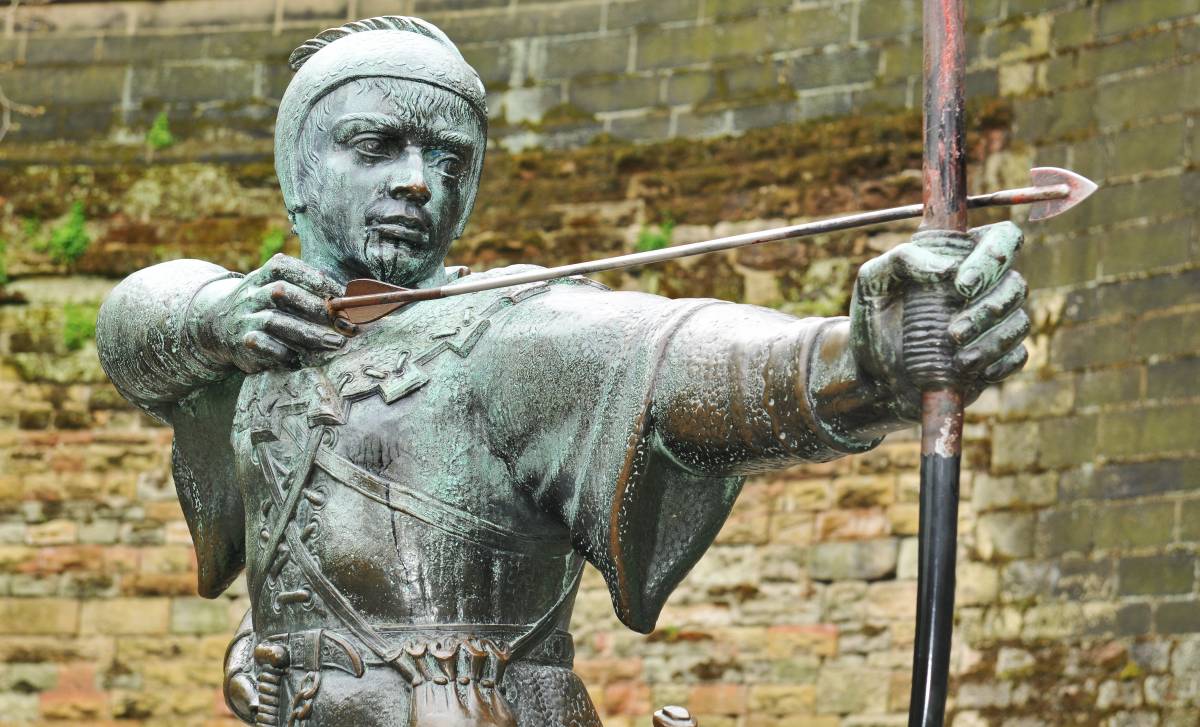Call to turn to Robin Hood for inspiration in promoting public health receives guarded welcome
Radical calls for scientists and practitioners to glean success stories from the rarefied world of elite sports and adapt them to help the wider population must be treated with caution, according to an international team of scientists.
In an editorial appearing in the latest issue of the British Journal of Sports Medicine, a team led by Gregoire P Millet from the University of Lausanne in Switzerland takes issue with aspects of an article that appeared in the journal earlier this year.

Applying lessons to benefit 'the many'
That article – by Canada-based Jane Thornton and colleagues – urged scientists and practitioners to follow the example of folklore hero Robin Hood and ‘draw on the opportunity and expertise gained by working with the elite few and apply it for the benefit of many’.
While Millet and his colleagues applaud the sentiment behind this argument, they note just a single successful example – the so-called ‘11 for health’ programme – was offered by Thornton et al. in their paper.
They argue that any lessons gleaned from working with elite athletes might not be directly transferrable.
'The goals may be similar for elite athletes and general or clinical populations, that is, optimising training impact and minimising negative effects (injuries, chronic fatigue/overtraining) but we argue that knowledge developed by sport scientists and practitioners working with elite athletes cannot be directly translated to population health without careful analysis and adaptation.’
Athletes 'not immune' to diseases
The authors accept that athletes are not immune from diseases or co-morbidities, and that no clear line separates the ‘elite athlete’ from the ‘non-healthy population’. They note: ‘Moreover, treatment may be more challenging in elite athletes due to added stress from exercise or antidoping regulations.'
Four examples that might offer way forward
To guarantee the safety and the effectiveness of this “translation”, clinical practitioners must have a good understanding of both SEM [sport and exercise medicine) and the specific disease of the user/patient [Gregoire P Millet et al.]
In four examples (summarised below), the authors explore how the gap between elites (and what they term ‘intense exercisers’, such as ultra-endurance or Cross Fit athletes) and ‘sedentary individuals or clinical populations’ might be bridged.
Individualised training prescription
Here, for example, they note that ‘training intensity distribution’ is being used as a component of training optimisation in both elite athletes and clinical populations, with the benefits of high-intensity exercise shown in patients with cancer or peripheral artery disease.
Development of health wearables
People working in elite sport gather and analyse data from wearable devices to monitor athletes’ locomotion and heart rate or blood pressure, for example. These devices are now widely accessible, including among those with chronic diseases, but have – in some cases – been criticised for lacking sensitivity. ‘Clinicians may also use wearables to motivate and to monitor changes for individual patient progress,’ the authors note
Use of environmental conditions
Care must be taken when exposing ‘at-risk’ subjects to the kind of challenging environmental conditions (heat, cold or hypoxia, for example) that are widely used to develop athletic prowess. The authors warn that what is seen to be a ‘safe and effective dose’ may differ between healthy and at-risk subjects. ‘Therefore, clinicians must closely monitor the patients’ response … to adapt the environmental condition’.
Concurrent endurance-strength training
While ‘healthy ageing’ recommendations have started to include strength training to help people with conditions such as sarcopenia and altered balance, using high loads/plyometric work with older adult populations or patients with musculoskeletal disorders may have limited scope, the authors warn.
‘There is a need to test and adapt resistance training prescription to match these limitation[s], by prescribing moderate loads or using techniques such as blood flow restriction.’
Conclusion: 'great value' could be attainable
Dr Millet, an associate professor, and his colleagues suggest that the examples summarised above show how evidence gathered from studying elite athletes could have ‘great value for enhancing public or clinical population health’.
They recommend: ‘However, to guarantee the safety and the effectiveness of this “translation”, clinical practitioners must have a good understanding of both SEM [sport and exercise medicine) and the specific disease of the user/patient.
‘We recommend more emphasis in the education of clinicians to safely adapt and apply elite athlete exercise principles into clinical populations. High-performance oriented sport scientists can contribute to the education of clinical exercise specialists if we work together and learn from each other,’ they add.
To see the full version of Opportunities and obstacles of translating elite sport research to public health, visit: http://dx.doi.org/10.1136/bjsports-2021-104374
Author: Ian A McMillan
Share it with














